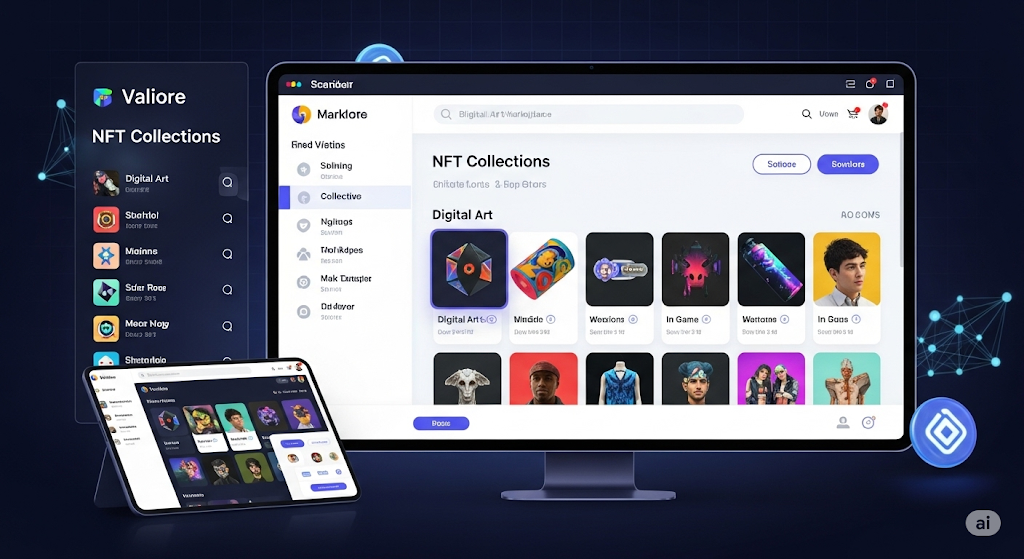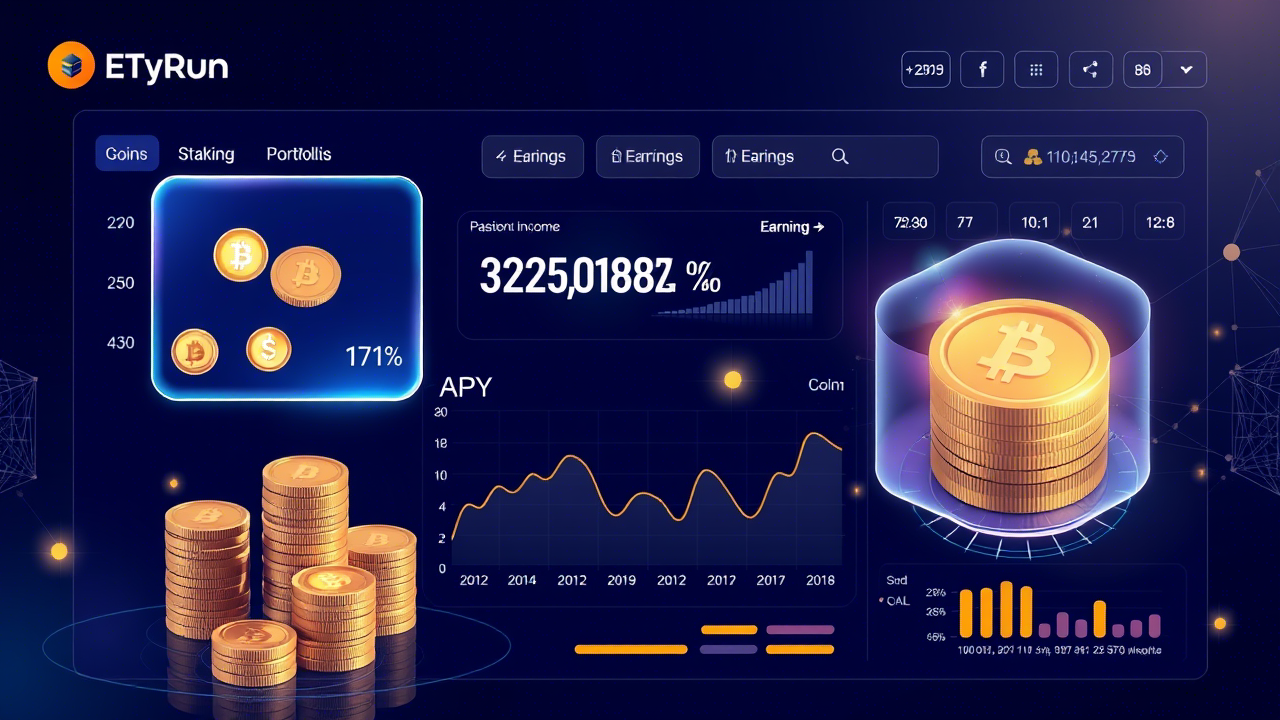The digital revolution has brought us many groundbreaking innovations, but few have captured global attention quite like blockchain technology. From powering cryptocurrencies to revolutionizing supply chains, what is blockchain has become a question that touches every industry and individual in today’s interconnected world. This transformative technology promises to reshape how we store data, conduct transactions, and establish trust in digital interactions.
Understanding blockchain technology is no longer just for tech enthusiasts or cryptocurrency traders. Whether you’re a student exploring new technologies, a professional looking to stay current with industry trends, or an entrepreneur seeking innovative solutions for your business, grasping the fundamentals of blockchain can open doors to numerous opportunities in our rapidly evolving digital economy.
Understanding What is Blockchain Technology in Simple Terms
At its core, blockchain is a digital ledger that records transactions across multiple computers in a way that makes it nearly impossible to change, hack, or cheat the system. Think of it as a digital notebook that’s shared among thousands of people, where everyone has an identical copy, and any new entry must be approved by the majority before it becomes permanent.
The name “blockchain” comes from its structure – information is stored in blocks, and these blocks are linked together in a chronological chain. Each block stores a cryptographic hash of the previous block, a timestamp, and the details of transactions. This creates an unbreakable chain where altering one block would require changing all subsequent blocks, making fraud practically impossible.
What makes blockchain revolutionary is its decentralized nature. Unlike traditional databases controlled by a single entity, blockchain operates on a peer-to-peer network where no single party has complete control. This eliminates the need for intermediaries and creates a system based on mathematical proof rather than trust in institutions.
The technology operates on consensus mechanisms, where network participants must agree before any new information is added. This democratic approach ensures transparency and security while maintaining the integrity of the data stored within the system.
How Blockchain Technology Works
To understand how blockchain functions, imagine a classroom where students maintain identical notebooks recording all classroom transactions. When someone wants to add a new entry, they must announce it to the entire class. The majority must verify and approve the entry before everyone updates their notebooks simultaneously.
The process begins when someone initiates a transaction. This transaction is broadcast to the network of computers (called nodes) that maintain the blockchain. These nodes validate the transaction using predetermined rules and cryptographic algorithms. Once verified, the transaction is combined with other approved transactions to form a new block.
Before the new block joins the chain, it must be approved through a consensus mechanism. The most common method is Proof of Work, where computers compete to solve complex mathematical puzzles. The first to solve the puzzle gets to add the block and receives a reward. Other methods include Proof of Stake, where validators are chosen based on their stake in the network.
Once consensus is reached, the new block is cryptographically linked to the previous block using a unique digital fingerprint called a hash. This hash is like a DNA signature – even the smallest change in the block’s content would create a completely different hash, alerting the network to potential tampering.
The completed block is then distributed across the entire network, ensuring every participant has an updated copy of the ledger. This redundancy makes the system incredibly resilient, as thousands of copies exist simultaneously across the globe.
Key Features of Blockchain Technology
Blockchain technology possesses several distinctive characteristics that set it apart from traditional database systems. Understanding these features helps explain why blockchain has gained such widespread attention and adoption across various industries.
Decentralization stands as blockchain’s most defining feature. Unlike centralized systems where a single authority controls data, blockchain distributes control across a network of participants. This eliminates single points of failure and reduces the risk of system-wide crashes or manipulation by bad actors.
Transparency and immutability work hand in hand to create an auditable trail of all transactions. Once data is recorded on the blockchain, it is nearly impossible to change or erase. This permanent record-keeping capability makes blockchain ideal for applications requiring absolute transparency and accountability.
Security in blockchain comes from its cryptographic foundation and distributed nature. Each transaction is secured using advanced encryption techniques, and the distributed network makes it extremely difficult for hackers to compromise the system. To successfully attack a blockchain, one would need to control more than half of the network simultaneously, which becomes increasingly difficult as the network grows.
Consensus mechanisms ensure all network participants agree on the validity of transactions before they’re added to the blockchain. This democratic approach eliminates the need for trusted third parties and creates a system where trust is built into the technology itself rather than relying on external institutions.
Types of Blockchain Networks
Understanding the different types of blockchain networks is crucial for grasping how this technology adapts to various use cases and requirements. Each type serves specific needs and offers different levels of access, control, and functionality.
Public blockchains represent the most decentralized form of the technology. These networks are open to everyone, with no restrictions on participation. Bitcoin and Ethereum are prime examples of public blockchains where anyone can join, make transactions, and participate in the consensus process. The complete transparency and openness make public blockchains ideal for cryptocurrencies and applications requiring maximum decentralization.
Private blockchains operate under controlled environments where access is restricted to specific organizations or individuals. These networks offer faster transaction processing and greater control over participants but sacrifice some of the decentralization benefits. Many enterprises prefer private blockchains for internal processes where they need blockchain’s benefits without exposing sensitive data to the public.
Consortium blockchains, also known as federated blockchains, strike a balance between public and private networks. A predetermined group of organizations controls these networks, making them semi-decentralized. Banks often use consortium blockchains for interbank transactions, where they need to share information securely among trusted partners without opening the network to the general public.
Hybrid blockchains combine elements of both public and private networks, allowing organizations to control access while maintaining some level of transparency. These flexible systems enable businesses to customize their blockchain implementation based on specific requirements, such as keeping certain data private while making other information publicly verifiable.
Real-World Applications of Blockchain
Blockchain technology has moved far beyond its cryptocurrency origins to transform numerous industries and everyday processes. These real-world applications demonstrate the practical value and versatility of this revolutionary technology.
In supply chain management, blockchain provides unprecedented transparency and traceability. Companies like Walmart use blockchain to track food products from farm to store, enabling rapid identification of contamination sources during food safety incidents. This capability has reduced the time needed to trace contaminated products from weeks to mere seconds, potentially saving lives and reducing waste.
Healthcare systems leverage blockchain to secure patient records and ensure data integrity. Medical records stored on blockchain become tamper-proof and easily shareable among authorized healthcare providers while maintaining patient privacy. This interoperability improves care coordination and reduces medical errors caused by incomplete or inaccurate information.
The banking and financial services sector has embraced blockchain for cross-border payments, trade finance, and identity verification. Traditional international transfers that take days and involve multiple intermediaries can now be completed in minutes with lower fees using blockchain-based systems. Cryptocurrency exchanges have revolutionized how people trade digital assets, making financial services more accessible globally.
Real estate transactions benefit from blockchain’s ability to create transparent and immutable property records. Smart contracts automate many aspects of property sales, reducing paperwork, fraud, and the need for intermediaries. This streamlines the buying process and makes property ownership records more reliable and accessible.
Digital identity management represents another significant application where blockchain enables individuals to control their personal information. Instead of relying on multiple centralized databases, people can maintain a single, secure digital identity that they control, reducing identity theft risks and simplifying verification processes.
Blockchain in Cryptocurrency
The relationship between blockchain and cryptocurrency is foundational, as blockchain technology was originally developed to support Bitcoin, the world’s first successful digital currency. This symbiotic relationship continues to drive innovation in both technologies.
Cryptocurrencies rely on blockchain to maintain secure, transparent, and decentralized transaction records. Every bitcoin transaction ever made is recorded on the Bitcoin blockchain, creating an immutable history that anyone can verify. This transparency builds trust in a system without central authorities like banks or governments.
Bitcoin purchasing and trading have become more accessible as the underlying blockchain technology has matured. The blockchain ensures that digital currencies cannot be counterfeited or double-spent, solving the fundamental problem of digital scarcity that plagued earlier attempts at digital money.
Different cryptocurrencies use various blockchain implementations to achieve specific goals. While Bitcoin focuses on being a store of value and medium of exchange, Ethereum’s blockchain supports smart contracts, enabling more complex applications. Other cryptocurrencies have developed specialized blockchains for specific use cases like privacy coins, stablecoins, or energy-efficient transactions.
The mining process in cryptocurrency blockchains serves dual purposes: securing the network through consensus mechanisms and distributing new coins to participants. Miners use computational power to validate transactions and create new blocks, receiving cryptocurrency rewards for their efforts. This incentive system maintains network security without requiring a central authority.
Crypto trading strategies have evolved as traders learn to navigate the unique characteristics of blockchain-based assets. The 24/7 nature of blockchain networks means cryptocurrency markets never close, creating opportunities and challenges different from traditional financial markets.
Benefits of Blockchain Technology
The advantages of blockchain technology extend across multiple dimensions, making it attractive for various applications and industries. These benefits explain why organizations worldwide are investing heavily in blockchain adoption and development.
Enhanced security represents blockchain’s most significant advantage. The combination of cryptographic hashing, distributed networks, and consensus mechanisms creates a system that’s extraordinarily difficult to compromise. Even if hackers attack individual nodes, the distributed nature ensures the network continues operating normally.
Cost reduction occurs through the elimination of intermediaries and the automation of processes through smart contracts. Traditional transactions often involve multiple parties taking fees at each step. Blockchain enables direct peer-to-peer transactions, reducing costs and settlement times significantly.
Increased transparency and accountability make blockchain ideal for applications requiring auditability. Every transaction is recorded permanently and visible to all network participants, creating an audit trail that’s impossible to manipulate. This transparency builds trust and enables better compliance with regulatory requirements.
Global accessibility means blockchain networks operate 24/7 without geographical restrictions. Unlike traditional banking systems with limited operating hours and geographic boundaries, blockchain enables truly global transactions at any time. This accessibility is particularly valuable for passive income generation through decentralized finance applications.
Improved efficiency comes from automating manual processes and reducing the need for reconciliation between different systems. Smart contracts execute automatically when predetermined conditions are met, eliminating delays and human errors common in traditional processes.
Challenges and Limitations
Despite its revolutionary potential, blockchain technology faces several significant challenges that must be addressed for widespread adoption. Understanding these limitations helps set realistic expectations about blockchain’s current capabilities and future development needs.
Scalability remains blockchain’s most pressing technical challenge. Bitcoin processes approximately seven transactions per second, while Ethereum handles about fifteen. Traditional payment networks such as Visa can handle thousands of transactions per second. This limitation makes current blockchain implementations unsuitable for high-volume applications without significant modifications.
Energy consumption, particularly in Proof of Work systems like Bitcoin, has drawn criticism for environmental impact. The computational power required for mining consumes substantial electricity, leading to concerns about blockchain’s sustainability. Newer consensus methods like Proof of Stake greatly lower energy consumption compared to older models.
Regulatory uncertainty creates challenges for businesses wanting to adopt blockchain technology. Different countries have varying approaches to blockchain and cryptocurrency regulation, making it difficult for companies to plan long-term strategies. This uncertainty can slow adoption and investment in blockchain projects.
Technical complexity presents barriers to mainstream adoption. Implementing blockchain solutions requires specialized knowledge and skills that are currently in short supply. The user experience of many blockchain applications remains complex compared to traditional alternatives, limiting broader public adoption.
Interoperability between different blockchain networks remains limited. Most blockchains operate in isolation, making it difficult to transfer assets or information between different systems. This fragmentation reduces the potential benefits of blockchain technology and complicates implementation for organizations using multiple blockchain platforms.
Blockchain vs Traditional Databases
Comparing blockchain technology with traditional database systems helps clarify when blockchain offers genuine advantages and when conventional solutions might be more appropriate. This comparison is crucial for making informed decisions about technology adoption.
Traditional databases offer superior performance for most applications. They can process thousands of transactions per second with minimal latency, making them ideal for high-volume applications like banking systems or e-commerce platforms. Database administrators can optimize performance and quickly resolve issues when they arise.
Control and governance differ significantly between the two approaches. Traditional databases allow centralized control, making it easy to implement changes, fix errors, or comply with regulations. Blockchain’s decentralized nature makes these tasks more complex but provides greater resistance to censorship and single points of failure.
Cost structures vary considerably between blockchain and traditional systems. While blockchain eliminates some intermediary costs, it introduces new expenses like network transaction fees and energy consumption. Traditional databases have predictable operational costs but may require expensive infrastructure and personnel.
Data integrity approaches reflect fundamental philosophical differences. Traditional databases rely on access controls and backup systems to maintain data integrity, which can be compromised by insider threats or system failures. Blockchain’s cryptographic approach makes data tampering virtually impossible but at the cost of flexibility in correcting legitimate errors.
The choice between blockchain and traditional databases depends on specific requirements. Applications requiring absolute transparency, decentralization, and tamper-proof records benefit from blockchain. Systems prioritizing performance, flexibility, and centralized control are better served by traditional databases.
Smart Contracts and Their Role
Smart contracts represent one of blockchain’s most powerful innovations, enabling automated execution of agreements without human intervention. These self-executing contracts have terms directly written into code, automatically enforcing agreements when predetermined conditions are met.
The concept extends beyond simple financial transactions to complex business logic and workflows. Smart contracts can manage insurance payouts, supply chain milestones, real estate transfers, and countless other applications where automated execution reduces costs and disputes.
Ethereum pioneered smart contract functionality, creating a blockchain specifically designed to support these programmable agreements. Developers can write smart contracts using programming languages like Solidity, creating applications that run exactly as programmed without possibility of downtime, censorship, fraud, or third-party interference.
Real-world smart contract applications demonstrate their practical value. Insurance companies use smart contracts for automated claim processing, where satellite data about weather conditions can trigger automatic payouts to farmers affected by drought. Supply chain smart contracts release payments automatically when goods reach specific locations, improving cash flow and reducing disputes.
The benefits of smart contracts include reduced costs, faster execution, and improved accuracy compared to traditional contract processes. However, they also present challenges like immutability of code errors and the need for reliable external data sources called oracles to trigger contract execution.
What is Blockchain Future Technology
The future of blockchain technology promises significant developments that will address current limitations while expanding into new applications and industries. Understanding these trends helps individuals and organizations prepare for the evolving digital landscape.
Scalability solutions are actively being developed to handle higher transaction volumes. Layer 2 protocols, sharding, and new consensus mechanisms promise to increase blockchain throughput while maintaining security and decentralization. These improvements will enable blockchain to compete with traditional payment systems in terms of speed and volume.
Integration with emerging technologies like artificial intelligence, Internet of Things, and 5G networks will create new possibilities for blockchain applications. IoT devices can automatically execute smart contracts based on real-world data, while AI can help optimize blockchain networks and identify fraudulent activities.
Central Bank Digital Currencies (CBDCs) represent government adoption of blockchain principles for national currencies. Countries worldwide are exploring or implementing digital versions of their currencies using blockchain technology, potentially revolutionizing monetary policy and financial inclusion.
Digital transformation strategies increasingly include blockchain components as organizations recognize its potential for process improvement and cost reduction. Businesses are moving beyond experimental projects to production implementations that deliver tangible value.
Environmental sustainability improvements through energy-efficient consensus mechanisms and carbon offset programs will address concerns about blockchain’s environmental impact. Proof of Stake and other alternative consensus methods consume significantly less energy than traditional mining.
Getting Started with Blockchain
For individuals and organizations interested in exploring blockchain technology, taking the right first steps can make the journey more manageable and productive. Starting with education and gradually progressing to practical applications provides a solid foundation for blockchain understanding.
Educational resources abound for learning blockchain fundamentals. Online courses, university programs, and certification programs offer structured learning paths for different skill levels. Technical professionals might focus on programming smart contracts, while business professionals could emphasize blockchain applications and strategy.
Practical experimentation helps solidify theoretical knowledge. Creating a cryptocurrency wallet, making small transactions, and using decentralized applications provides firsthand experience with blockchain technology. Crypto wallet knowledge is essential for anyone planning to interact with blockchain systems.
Professional development opportunities in blockchain continue expanding as demand for skilled professionals grows. Roles range from blockchain developers and architects to business analysts and project managers specializing in blockchain implementations. Long-term financial security can benefit from understanding how blockchain might affect various industries and investment opportunities.
Organizations should start with pilot projects that address specific business problems rather than implementing blockchain for its own sake. Successful pilots demonstrate value and build internal expertise before scaling to larger implementations.
Networking within the blockchain community provides valuable insights and opportunities. Attending conferences, joining online communities, and participating in blockchain meetups connects individuals with experts and peers sharing similar interests.
Security Considerations
While blockchain technology offers inherent security advantages, users and implementers must understand potential vulnerabilities and best practices for maintaining security in blockchain applications and investments.
Private key management represents the most critical security consideration for blockchain users. Unlike traditional systems where forgotten passwords can be reset, lost private keys mean permanent loss of access to blockchain assets. Secure storage solutions include hardware wallets, multi-signature arrangements, and properly secured backup procedures.
Smart contract vulnerabilities can create significant security risks despite blockchain’s underlying security. Poorly written smart contracts may contain bugs that hackers can exploit, as demonstrated by several high-profile incidents in decentralized finance. Thorough testing and security audits are essential before deploying smart contracts with significant value.
Phishing and social engineering attacks target blockchain users through fake websites, fraudulent communications, and impersonation schemes. Education about common attack methods and verification procedures helps users avoid falling victim to these increasingly sophisticated schemes.
Exchange security varies significantly among cryptocurrency trading platforms. Users should research exchange security practices, use two-factor authentication, and avoid keeping large amounts of cryptocurrency on exchanges for extended periods.
Network security considerations include understanding the risks of different blockchain networks and consensus mechanisms. Smaller networks may be more vulnerable to attacks, while larger, established networks generally offer better security through their size and distribution.
Blockchain Investment Opportunities
The blockchain ecosystem offers various investment opportunities for individuals seeking exposure to this transformative technology. Understanding these options helps investors make informed decisions aligned with their risk tolerance and investment objectives.
Direct cryptocurrency investment provides the most straightforward blockchain exposure. Strategic crypto investments require understanding different digital assets, their underlying technology, and market dynamics. Diversification across multiple cryptocurrencies can help manage risk in this volatile market.
Blockchain stocks offer indirect exposure through companies developing or implementing blockchain technology. These include cryptocurrency exchanges, mining companies, and traditional corporations integrating blockchain into their operations. This approach provides blockchain exposure while potentially offering more stability than direct cryptocurrency investment.
Stock market investment in blockchain-related companies requires careful analysis of business models, competitive positions, and growth prospects. Companies with sustainable blockchain business models may offer better long-term potential than those merely riding the blockchain hype.
Decentralized finance platforms enable earning returns through various mechanisms like lending, staking, and liquidity provision. However, these opportunities come with smart contract risks, regulatory uncertainty, and potential impermanent loss in liquidity pools.
Real estate tokenization and other blockchain-based investment vehicles are emerging as the technology matures. These innovations could democratize access to traditionally exclusive investment opportunities while improving liquidity and transparency.
Regulatory Landscape
The regulatory environment surrounding blockchain technology continues evolving as governments worldwide grapple with balancing innovation encouragement with consumer protection and financial stability concerns.
India’s regulatory approach has shifted from initial skepticism to growing acceptance of blockchain technology while maintaining caution about cryptocurrencies. The Reserve Bank of India and Securities and Exchange Board of India are developing frameworks that could provide clarity for blockchain businesses and investors.
Global regulatory coordination efforts aim to prevent regulatory arbitrage while ensuring consistent approaches to blockchain governance. International organizations and bilateral agreements help align regulatory frameworks, reducing compliance complexity for global blockchain projects.
Compliance requirements vary significantly across jurisdictions and applications. Financial services applications face stricter regulatory oversight than supply chain or identity management uses. Organizations must carefully assess regulatory requirements for their specific blockchain implementations.
Future regulatory developments will likely focus on consumer protection, anti-money laundering, taxation, and systemic risk management. Staying informed about regulatory changes helps individuals and organizations make better decisions about blockchain involvement.
The evolving regulatory landscape creates both opportunities and challenges for blockchain adoption. Clear regulations can increase institutional confidence and investment, while overly restrictive approaches might stifle innovation and drive development to more favorable jurisdictions.
FAQ
What is blockchain technology in simple words?
Blockchain is a digital ledger that records transactions across multiple computers simultaneously, making it virtually impossible to alter or hack the recorded information.
How does blockchain work without a central authority?
Blockchain uses consensus mechanisms where network participants validate transactions collectively, eliminating the need for a single controlling entity to verify and approve transactions.
What are the main types of blockchain networks?
The four main types are public blockchains (open to everyone), private blockchains (restricted access), consortium blockchains (controlled by a group), and hybrid blockchains (combination approach).
Where is blockchain technology used in real life?
Blockchain is used in cryptocurrency, supply chain tracking, healthcare records, banking, real estate, digital identity verification, and voting systems among many other applications.
Is blockchain technology secure and safe?
Blockchain provides high security through cryptographic encryption and distributed networks, but users must still follow proper security practices for private key management and platform selection.
What is the difference between blockchain and Bitcoin?
Bitcoin is a cryptocurrency that runs on blockchain technology, while blockchain is the underlying distributed ledger technology that can support many different applications beyond cryptocurrencies.
Can blockchain technology be hacked or manipulated?
While blockchain itself is extremely difficult to hack due to its distributed nature, individual applications, exchanges, and user accounts can still be vulnerable to security breaches.
What skills are needed to work with blockchain technology?
Technical roles require programming skills, cryptography knowledge, and understanding of distributed systems, while business roles need strategic thinking and knowledge of blockchain applications and limitations.
Learn more about blockchain technology on Wikipedia.
Final Thought
Blockchain technology represents more than just a technological innovation – it embodies a fundamental shift toward decentralized, transparent, and secure digital interactions. As we’ve explored throughout this comprehensive guide, understanding what is blockchain technology opens doors to recognizing its transformative potential across industries, from finance and healthcare to supply chain management and beyond.
The journey from blockchain’s cryptocurrency origins to its current diverse applications demonstrates the technology’s versatility and growing maturity. While challenges like scalability, energy consumption, and regulatory uncertainty remain, ongoing developments in consensus mechanisms, layer-2 solutions, and regulatory frameworks continue addressing these limitations.
For individuals and organizations considering blockchain adoption, the key lies in understanding specific use cases where blockchain’s unique properties – decentralization, transparency, and immutability – provide genuine advantages over traditional alternatives. Success in the blockchain space requires balancing enthusiasm for innovation with realistic assessment of current capabilities and limitations.
As blockchain technology continues evolving, staying informed about developments, regulatory changes, and emerging applications will help you make better decisions whether you’re an investor, entrepreneur, or professional seeking to leverage this revolutionary technology. The future of blockchain holds immense promise, and understanding its fundamentals positions you to participate in the digital transformation reshaping our world.












Leave a Reply